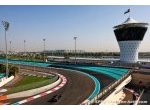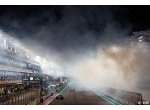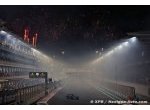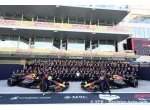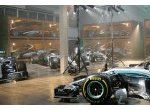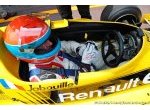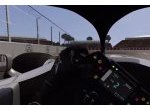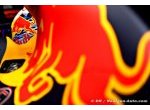Australia 2018 - GP Preview - Haas F1 Ferrari
Team quotes
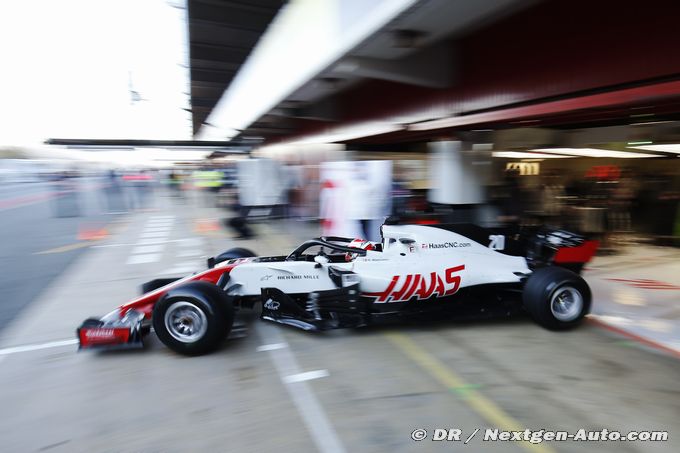
It’s a different kind of Australian Open as the 2018 FIA Formula One World Championship heads to the land down under for the season-opening Australian Grand Prix March 25 at Melbourne Grand Prix Circuit.
While the championship battle will be waged among the big-three teams of Mercedes, Scuderia Ferrari and Red Bull, the ultra-competitive midfield is wide open. Seven teams consisting of Haas F1 Team, Force India, Williams, Renault, Toro Rosso, McLaren and Sauber appear to be on relatively equal footing as the 21-race season kicks off on the 5.303-kilometer (3.295-mile), 16-turn street course inside the city’s Albert Park.
A dark horse in this horsepower-laden Australian Open is Haas F1 Team. The American outfit enters its third Formula One season after turning heads in preseason testing Feb. 26-March 9 at Circuit de Barcelona – Catalunya.
On the penultimate day of testing, Haas F1 Team driver Kevin Magnussen put down a lap of 1:18.360. It was the second-fastest time of the day and it ended up being the sixth-quickest overall time achieved during the eight days of testing. Amplifying Magnussen’s mark was that it was earned using the Pirelli P Zero Red supersoft tire. Every driver ahead of him was on the grippier and subsequently faster Pink hypersoft tire. And when utilizing Pirelli’s estimated delta times to the softest compounds, it brings Magnussen’s fast lap close to the unofficial track-record time of 1:17.182 set by Scuderia Ferrari’s Sebastian Vettel that same day.
Speed, however, must be paired with reliability in order to garner results. Magnussen’s teammate, Romain Grosjean, showcased Haas F1 Team’s reliability in the final day of testing when he led the way with 181 laps to set a new benchmark for the organization. Prior to this year’s test, the highest single-day lap tally of any Haas F1 Team driver during preseason testing was 119 laps by Grosjean, set on March 9, 2017. Grosjean augmented his laps with speed, as his best time of 1:18.412 on Purple ultrasofts put him fifth-fastest on the day and ninth overall among the 22 drivers who took part in testing.
Alas, it’s called testing for a reason. There was no actual racing. That, of course, begins in Melbourne, and it’s where the optimism of testing meets the abruptness of reality.
The Melbourne Grand Prix Circuit comprises public roads encircling Albert Park Lake, a man-made body of water just south of Melbourne’s central business district. The roads were rebuilt prior to Formula One’s debut at the track in 1996, but because the surface only sees racecars about once a year, grip is hard to come by, especially in the initial practice sessions. It’s a street circuit that behaves more like a natural road course. It’s quick too, with Mercedes driver Lewis Hamilton setting a track-record time in qualifying last year with a blistering lap of 1:22.188 to take the pole.
Magnussen and Grosjean have proven to be quite adept at navigating the Albert Park layout.
Magnussen made his first career Formula One start in the 2014 Australian Grand Prix. It was an incredibly stout performance as he started fourth and finished second. The 18 points Magnussen earned for that runner-up effort put him in the Formula One record book for the most points scored in a debut. And unless a new driver wins in his first race, it’s a feat that won’t be beat. (Next best is Felipe Nasr, who scored 10 points in his debut via a fifth-place finish in the 2015 Australian Grand Prix.)
With his second-place finish, Magnussen joined an exclusive group of drivers who claimed a podium in their Formula One debut. Jacques Villeneuve did it in 1996 (second) and Hamilton did it in 2007 (third). Both accomplished the feat in the Australian Grand Prix. Villeneuve went on to win the Formula One title in 1997 and Hamilton is a four-time champion (2008, 2014, 2015 and 2017).
Not to be outdone, Grosjean added his own piece of history when he finished sixth in the 2016 Australian Grand Prix. That was Haas F1 Team’s first race, and it stands as the best debut for any Formula One team since 2002 when Mika Salo finished sixth for Toyota, also at the Australian Grand Prix.
Those pieces of history, along with Haas F1 Team’s recent testing history at Barcelona, bode well for the organization’s third trip to Melbourne. With the Australian Grand Prix shaping up to be a wide-open race at the very beginning of a wide-open season, Haas F1 Team seeks a serving of points in this Australian Open.
Gunther Steiner
In 2016, Haas F1 Team was starting from scratch, and that had its own unique challenges. To get ready for 2017, you had to race your 2016 car while simultaneously developing your 2017 car. It’s what every Formula One team does, but that was Haas F1 Team’s first time doing so. But considering how every team improved for 2018 and none seemed handicapped in terms of engine and chassis design, do you envision 2018 being Haas F1 Team’s most challenging season yet?
“Every season, or at least just before the start, is the most challenging, as you don’t know what you’re going to be in for. You don’t know how strong the opposition is. It’s always a challenge, but there’s not one more than the other. It’s always a big challenge every year.”
Haas F1 Team tested at Circuit de Barcelona – Catalunya for eight days over a 12-day span. How did it go and how did it prepare you for Australia?
“Normally, you can get well prepared, as you should when you have eight days of testing. This year, unfortunately, due to the weather, we only had five clear days of testing. Then again, it’s the same for everybody. So, you get as best prepared as you can.”
Did testing provide a glimpse of where Haas F1 Team stacks up to the competition, or will it only be known after a handful of races?
“I would say we’ll know the potential of the car after qualifying in Australia. After the test, we can say we’re in the midfield, and hopefully in the top half of the midfield. I think we are cautiously optimistic.”
The weather in Barcelona impacted the amount of time you got on the racetrack. While it was the same for everyone, how did it impact your planning and the data you wanted to acquire?
“We just changed the test plan for the second week.”
You’ve said that this year’s car is an evolution of last year’s car, with the intent being to make it more consistent. Whether it was with aero balance or mechanical balance, do you feel you achieved the kind of consistency you were looking for?
“Yes, I would say the guys did a very good job on aero and design to get a car that is better balanced than the 2017 car. Then again, we’ll only see in Australia how it stacks up against the other cars.”
While everyone seemed to have an opinion about the halo as each team introduced its new car, by the end of the test it all seemed pretty normal. Was it much ado about nothing, or did the higher center of gravity and change in aerodynamics force you to work on different areas of the car?
“Everybody works in the same area, and when you have a change like this, there is specific work that needs to be done. In the beginning, you make big gains, but then the gains get smaller and smaller the more you develop.”
There wasn’t much talk about brakes during testing. How much of a relief was that, and what did you do to find a brake package that suits both drivers?
“You just use your experience and see what other people are running. You get in contact with the suppliers and develop your own package. It looks like most of that problem is sorted, if not all. Again, we haven’t done a race with it, so I’m still a little bit cautious.”
Obviously, a lot was learned at Barcelona, but there wasn’t much time between when the cars arrived back at the factory before they had to leave again for Australia. What did you do to make the most of that time?
“It’s all planned out. On test number two you run chassis number two. Chassis number one goes back to the factory to be repainted after a week of testing. Then the mechanics go back and assemble it. The staff in the background work to get all the parts and pieces together, to assemble the cars, and refurbish the test car.”
With Haas F1 Team’s third season-opener now upon us, how has the preparation for this year differed from last year? Has it been somewhat easier from the standpoint that both the technical regulations stayed relatively the same and your driver lineup stayed the same?
“I wouldn’t say it’s been easier. You don’t want to make the job easier. You want to get as much as you can out of what you’ve got. In the first years, it was just getting it all done. It’s complex, but once we got our processes better, we just wanted to do more, and that meant better work, which got us a faster car and allowed us to perform.”
Reliability is always important, but how crucial is it early in the season, and especially at the first race, where you can capitalize on another team’s teething problems as opposed to when we’re deeper into the season and teams have a pretty good handle on their racecars?
“Reliability is already important at the test. If your car is reliable, you can gather a lot of data and you get better prepared for the first race. Reliability is fundamental to a good car.”
Beyond points, what would you like to achieve in Australia that you can take with you to Bahrain and future grands prix?
“Double points is always the best finish. Getting into Q3 with both cars, that is our aim this year, because then, anything can happen.”
Romain Grosjean
In 2016, Haas F1 Team was starting from scratch, and that had its own unique challenges. To get ready for 2017, the team had to race its 2016 car while simultaneously developing the 2017 car. It’s what every Formula One team does, but that was Haas F1 Team’s first time doing so. But considering how every team improved for 2018 and none seemed handicapped in terms of engine and chassis design, do you envision 2018 being Haas F1 Team’s most challenging season yet?
“No, I don’t think so. I think 2017 was our most challenging season due to the change in the regulations. I think for 2018, we’ve prepared very well, and early on. I’m hoping we’ve done a great job. Obviously, we’re going to see from the first races where we are, then try and keep up the development. I think this year’s a bit more straightforward.”
Haas F1 Team tested at Circuit de Barcelona – Catalunya for eight days over a 12-day span. How did it go and how did it prepare you for Australia?
“Testing went pretty well. The first week was challenging with the weather conditions. The second week we worked very well. We did some great laps and worked through the program we wanted to do, which was great. I think that’s the best we could prepare for the season. Obviously, every track is different, and we’re going to face different temperatures and things like that, but we’ve done as much as we could.”
How would you describe the VF-18?
“The VF-18 has a very good baseline. The feeling I get in the car is very good, which is the main thing. It’s a good-looking car. We know where we can update it and try to get more performance from it. We’re going to work on that. I think it’s the best car we’ve had so far for Haas F1 Team.”
The weather in Barcelona impacted the amount of time you got on the racetrack. While it was the same for everyone, how did it impact your planning and the data you wanted to acquire?
“The more time spent in the car, the better it was. Muscle-wise, you train all winter long and your muscles are not used to getting the loading from the F1 car. So, the more seat time you get, the better it is, and you can then try more things as well. Again, there was nothing we could do about the snow, the cold weather or the rain. I still feel like we’re ready to go and enjoy Australia.”
This year’s car is an evolution of last year’s car, with the intent being to make it more consistent. Whether it was with aero balance or mechanical balance, do you feel the car has the kind of consistency you’re looking for?
“I think it has a good consistency and a very good platform that all of us, as drivers, want.”
While everyone seemed to have an opinion about the halo as each team introduced its new car, by the end of the test it all seemed pretty normal. Was it much ado about nothing, or did the halo take some getting used to?
“Driving-wise, I got used to the halo quickly, in a lap or so. Jumping in and out of the car is a bit more tricky. The visibility may be less good, but anyway, it’s on the car and we’ve got to live with it.”
Reliability is always important, but how crucial is it early in the season, and especially at the first race, where you can capitalize on another team’s teething problems as opposed to when we’re deeper into the season and teams have a pretty good handle on their racecars?
“Early on in the season it’s really key to get reliability. It allows you to get results you maybe weren’t expecting. Hopefully, that’s going to be on our side, then we can score quite a lot of points early on and stay in the fight for a good constructors position.”
Haas F1 Team has run well in its two Australian Grands Prix, with a sixth-place finish in 2016 and a double-points finish in the offing last year before suffering a double DNF late in the race. Is the speed you’ve shown out of the box a testament to caliber of people working at Haas F1 Team?
“It’s great that we’ve done very well in Australia over the last couple of years. It shows that the car has been well built and ready to go. Hopefully, that’s the same this year, then we can put on some performance during the season and keep up the development.”
Haas F1 Team’s debut in the 2016 Australian Grand Prix was pretty remarkable, with your sixth-place finish the best debut for any Formula One team since 2002 when Mika Salo finished sixth for Toyota, also at the Australian Grand Prix. Can you describe that moment and what it meant for you and the team?
“It meant a lot. It was a result we were clearly not expecting after a tough qualifying. We had a brilliant race. When we took the checkered flag, for us, it was clearly as good as winning the race. It was fortunate, but perfect.”
How important is it to start the year with some point-paying finishes, as it can give the team some cushion for the rest of the season when some of the bigger teams further develop their cars?
“The more points we have early on, the more chance we have to get a high score at the end.”
What is your favorite part of the Melbourne Grand Prix Circuit?
“I love the backstraight with the high-speed corner – turns 10 and 11.”
Explain a lap around the Melbourne Grand Prix Circuit, especially now after having competed there with the faster, current-generation car.
“Turn one is one of the really big differences in the current-generation car. You carry much more speed into turn one in Australia. Then, in sector two, you have the high-speed chicane through (turns) 11 and 12 and you’ve got much more downforce than before. Finally, in sector three, at turn 14, it’s almost flat through the right-hand corner, whereas in the past you were braking, and it changed the way you approached the next corner.”
Kevin Magnussen
In 2016, Haas F1 Team was starting from scratch, and that had its own unique challenges. To get ready for 2017, the team had to race its 2016 car while simultaneously developing the 2017 car. It’s what every Formula One team does, but that was Haas F1 Team’s first time doing so. But considering how every team improved for 2018 and none seemed handicapped in terms of engine and chassis design, do you envision 2018 being Haas F1 Team’s most challenging season yet?
“Challenging? I don’t know. It’s going to be a good season, another good season. The first two for the team have been quite successful. It’s going to be difficult to improve them but, of course, that is our aim.”
Haas F1 Team tested at Circuit de Barcelona – Catalunya for eight days over a 12-day span. How did it go and how did it prepare you for Australia?
“It went well. I think we made progress with the car. Hopefully, when we get to Australia, we have a package that we know and are happy with.”
How would you describe the VF-18?
“It’s been pretty consistent. We’ve only been to one track with it, but we’re going to learn a lot more about it during the season.”
Did testing provide a glimpse of where Haas F1 Team stacks up to the competition, or will it only be known after a handful of races?
“That’s only going to be known after the first few races.”
This year’s car is an evolution of last year’s car, with the intent being to make it more consistent. Whether it was with aero balance or mechanical balance, do you feel the car has the kind of consistency you’re looking for?
“We don’t really know yet until we get to other circuits, but it worked pretty well in Barcelona.”
While everyone seemed to have an opinion about the halo as each team introduced its new car, by the end of the test it all seemed pretty normal. Was it much ado about nothing, or did the halo take some getting used to?
“I think the halo will still take some time getting used to.”
Haas F1 Team had a remarkable debut in the 2016 Australian Grand Prix. And in 2014, you also had a remarkable Formula One debut at Australia, starting fourth and finishing second to Nico Rosberg. How were you able to achieve such a strong result in your first Formula One race?
“I think I just went into it with a smile. I enjoyed it. I didn’t really think too much about the race. I had nothing to lose. I just went for it. I drove at my best, had a bit of luck as well, and I ended up on the podium. It was a great experience and a memory I will have forever. It’s always going to be quite cool to say that I finished second in my first Formula One race, although it would have been nice to win. I’ll do that another time.”
Beyond points, what would you like to achieve in Australia that you can take with you to Bahrain and future grands prix?
“I think simply if we get points, we’ll be happy. We’ll go from there.”
What is your favorite part of the Melbourne Grand Prix Circuit?
“I’d say turn 11 – the chicane – because it’s fast.”
Explain a lap around the Melbourne Grand Prix Circuit, especially now after having competed there with the faster, current-generation car.
“Australia’s cool because it’s part street circuit, part road course. It’s got the feeling of being a street circuit, but it has the flow of a permanent road course. It’s tricky because it’s bumpy in places, braking zones are twisty, and corners are tight in places. That said, it still has some good, high-speed sections like turn 11. The chicane there is really, really fast with the current-generation car. It’s just exciting to be in Australia. It’s the first race of the year and that brings a special feeling.”
